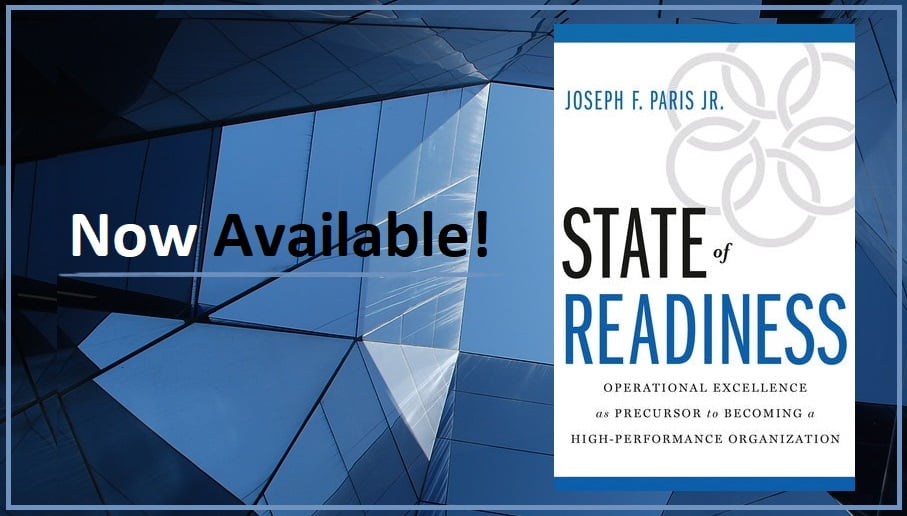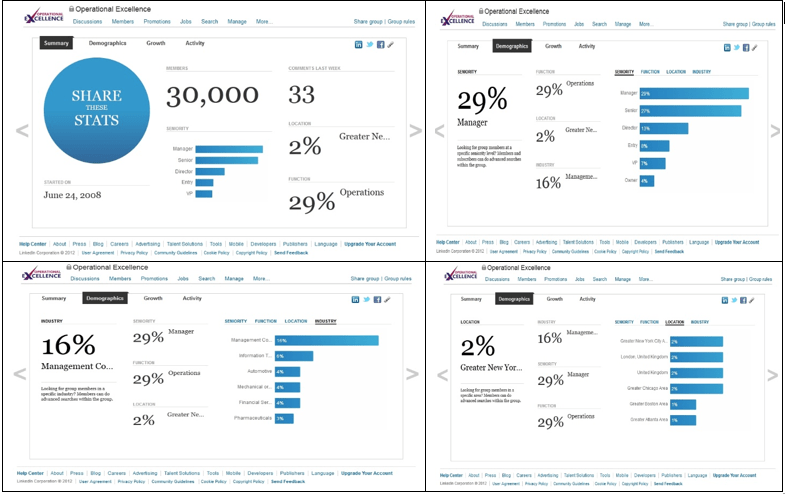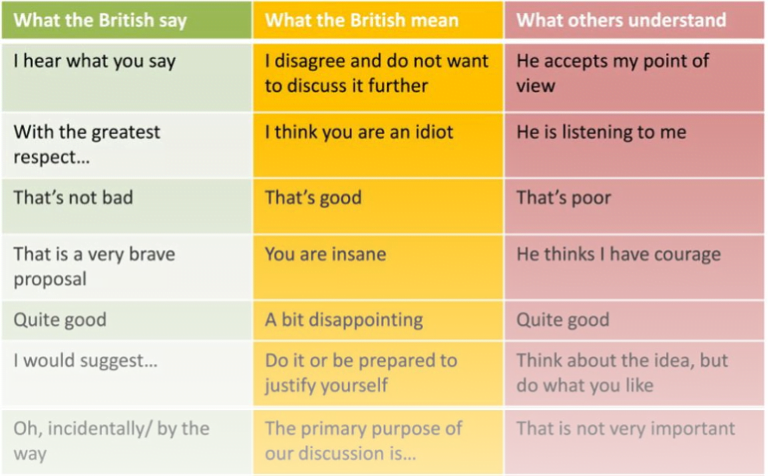Professional Development and Networking using Social Media
If you are reading this, you probably engage in professional networking on social media. And if you are like me, you have been engaging for a very long time.
The motivation is probably similar to mine. You want to learn and understand what’s going on in your profession, your industry, your community – and probably the world at large – so you can remain aware and up to date on the latest information and knowhow.
And you want to meet people who can support you in your endeavors and aspirations and, hopefully, you want to help others in a similar fashion.
Of course, there is much more to engaging in social media. But if you agree with the above, then you and I are in alignment.
There are nearly countless social media sites today – seemingly one for every strata of society. For some, the targeted constituents have a narrow while others appeal to the wider world at large. But are all these really social media sites?
I came across and article on makeawebsitehub entitled “60+ Social Networking Sites You Need to Know About in 2018”. Not that this particular site is an authority on anything (it might be, I don’t know), but I was looking for a list of social media sites and I think the article on this site is pretty good. However, reading thought it gave me cause for pause.
What is a social media site?
Social Engagement is people focused; When I think of social media, I think of a town square. There are all manner of people coming and going. Sometimes they stop and chat to catch-up with one another or discuss the general goings-on. Sometimes they look for advice on one thing or another. Maybe they post an offer or request on the community bulletin board. There might be some entertainment or a market. This is the form taken by the major social media sites that exist, such as; LinkedIn, Facebook, and Twitter (to name the majors).
Knowledge Sharing is content focused; There are other sites which some consider social media sites, but are really oriented towards sharing knowledge in the form of content. Sure, there is engagement from the community at large, but the epicenter of the engagement is the content being shared. There is an exhaustive list of such sites, but they include; YouTube, StumbleUpon, Reddit, Instagram, Tumblr, Pintrest and so on. I also put dating sites in this category – but in this case, the content is the person.
In addition to social engagement, LinkedIn and Facebook also have strong support for knowledge sharing with the ability to post content and generate conversations (discussions) around the content.
Communication Service is message focused; And the last category of sites that are considered social media are really communication services. The engagement is normally one-to-one. But you can also create a group of people who have some commonality (i.e. family, classmates, group trip, and so on) and want an easy way to communicate by broadcasting to all the members of the group at once – but one that is also closed to outsiders. There is also an exhaustive list of these sites, and include; Skype, Whatsapp, Facebook’s Messenger, and WeChat (to name a few).
The most popular social media sites that are used for Professional Development and Networking are;
Google+; It existed. I was a member. Never used it. Now it’s dead. Moving on.
Twitter; I have a few Twitter accounts and I share my goings-on and send notifications of my articles and eNewsletters as they are published. But I have never seen any real value in the platform from a professional networking perspective.
It might not be right, and it might not be fair, but this goes to my personality (impatient business person from New York) – and my projecting that people with whom I would like to engage have similar behaviors. I find Twitter to just be “noise”. The most elementary of communication without much value. And I don’t have time to sift through the noise for the one nugget of value that may or may not exist.
Facebook; I use Facebook for friends and family and I keep my posts quite private. The only exception is if there is a new review of my book, “State of Readiness”, or I am attending some conference someplace. Only then will I set the privacy to “global”. I also use Facebook’s Instagram, but only for sharing some of my pictures, not for business.
I do maintain several Facebook pages for my various business platforms and post content that is relevant. Unlike with Twitter, the content on Facebook can be more substantive and I tend to post more on my Facebook pages. But, like with Twitter, I don’t see any real tangible benefit.
This is not for lack of trying. I spent a considerable sum of money on both platforms to build awareness of, and drive traffic to, the Operational Excellence Society’s website. The results were very poor for the money spent. And creating organic traffic is as easy and doesn’t cost anything.
I also paid for the promotion of my book on these platforms leading up to its release and during the first couple of months after its release. I can honestly say that I cannot trace a single sale or other tangible benefit to these efforts.
I have even hired “marketing guru’s” and firms that “guarantee” results. I guess poor results are still results. In the future, I will guarantee the results myself by paying for performance – only after the promised performance has been delivered.
In the end, these platforms might work well with others in other professions (celebrities, restaurants, entertainment, and the like). But the bottom line for me and in my profession, advertising and creating awareness on these platforms only moved money from my pocket to that of the platforms.
Never again…
LinkedIn; I have been a member of LinkedIn since 2006 and it is my main vehicle for professional development and networking. Over the years, I have become connected with almost 8,750 people (never with profiles who are not individuals) and have 9,500 followers (people that follow my posts, but with whom I am not connected). I will never ask to connect with someone unless they somehow inspire me to want to connect with them. And I will never accept a connection request unless the person has a completed profile and looks “real”.
In 2008, I created the Operational Excellence Group on LinkedIn. People must apply to join, but so long as the profile is a “real” individual, their approval is assured. Once in, they are free to engage at will, provided they don’t spam or overly solicit business (a value proposition embedded in content is encouraged). Substantive articles, white-papers, and other content demonstrative of “thought leadership” was especially encouraged. It has since grown to 65,000 members and is a “center of gravity” for the discipline of Operational Excellence on LinkedIn.
Where is professional development and networking on social media headed?
I am not a celebrity, or a restaurant, or offer entertainment, or support a hobby, or a vacation spot, so I can only offer my observations, insights, and opinions for who I am and what I do, and that is; a business professional who is considered an expert in my discipline by many people and who’s geographic reach is beyond regional.
And given who I am and what I do, and also my past experience as noted above, I will disregard Facebook and Twitter and concentrate on LinkedIn as the best fit for me and my purposes.
- LinkedIn – The Past
I found the people and engagement quite interesting when I first joined LinkedIn over a decade ago. The discussions were primitive in presentation (no pictures, for instance), but the dialog was very engaging and active. Maybe it’s because those who were on it were leading-edge and people who were naturally expansive and curious? I don’t know.
Groups; A real step-change occurred with the introduction of LinkedIn Groups. Now, a person could claim a genre of knowledge and (with considerable nurturing and development) establish the group as a repository of wisdom and central meeting point. A place where thought leaders on the given subject could congregate for discussion, discourse, and discovery – a center of gravity for that discipline, if you will. It was a cyber-version any of the famous Parisian Restaurants that catered to some of the greatest writers of the 19th and 20th Centuries. Being virtual, you needed to bring your own Absinthe.
The quality of the content was very high; usually the work of academics, practitioners, or experienced consultants – and the corresponding engagement from the group members was also (mostly) cerebral and very lively. The group self-policed itself. I rarely had to “flag” something as inappropriate because someone else usually did. And very rarely was this power to “flag” misused.
Articles; LinkedIn also added functionality for publishing your own articles within the LinkedIn platform itself. Previously, you had to link to articles that were published external from LinkedIn. A person could share their articles in their feed and in the various groups to which the belonged.
Some articles were selected to be included in “The Pulse”, which was LinkedIn’s feed of the best content for a given genre in which you indicated an interest. Sure, most of the articles were from well-known business and thought-leaders. But, since an author could not publish in The Pulse, it had to be selected by the LinkedIn algorithm or some LinkedIn employee, it did cause other writers who felt they had some thoughts to share to “up their game” in the quality of their content. I remember being very pleased when some of my articles made it to The Pulse.
- LinkedIn – The Present State
As LinkedIn has matured, and especially since being acquired by Microsoft, there has been an obvious effort on the part of LinkedIn to concentrate the control of the data and information contained in the social media site within its four walls. This is especially true of LinkedIn groups. So, the present state of LinkedIn is the story of “The Good, the Bad, and the Ugly”.
First, the Good. From a user perspective, the navigation is much better than it used to be (even if it does take a bit of getting used to every time they roll-out an update – always without warning). And there has been a marked increase in the overall offerings available.
SlideShare; LinkedIn has retained “SlideShare” where users can upload and consume presentations in a PowerPoint-like format. I have never been a fan of either without a presenter or narrator offering context to the information on the slide. And the user comments are worthless – filled with spam.
LEARNING; LinkedIn has added a library of videos called “LEARNING”. The ones I looked at were professionally produced and some had supplemental materials (templates, sample datasets, and the like). All in, a pretty decent offering for learning a subject at a high-level. But it should not be confused with, or considered a substituted for, a course and curriculum on any given subject. This service is presently free, but I can see LinkedIn trying to monetize it someday.
… That’s about it for the good.
Next, the Bad. As is normally to be expected when you are the dominant player in a marketplace, the drive to monetize as much as is possible, without seeming (too) arrogant, is great. LinkedIn is no exception to this.
Searches; It used to be that, as a “Premier” member of LinkedIn, you could search on a wide variety of data-points (filters). During the course of time, this set of data-points was reduced, but made available under another premium plan; either “Sales Navigator” or “Recruitor”. Of course, there is an up-charge for either of these plans. And I don’t begrudge LinkedIn for trying to maximize revenue.
… Not a whole lot of bad, either.
Finally, the Ugly. I consider this the “ugly” because it strikes at the heart of what attracted me to LinkedIn in the first place – the search for wisdom and intelligent people wanting to share their wisdom with others. It’s not that the wisdom or intelligence does not exist on LinkedIn anymore, it’s just much more difficult to find – you really have to turn-up the squelch to filter out the noise.
There is a lot of ugly…
Content Quality; There has been a marked decrease in the quality of the content (Postings and Articles) over time. Most are merely advertisements for conferences and other offerings. And the vast majority of articles that do exist are what I call “Popcorn Posts”; as you know, popcorn takes up space but has no nutritional value. I might have to click on a couple dozen posts before I find something worthwhile to read – which means I almost never read them because I don’t like wasting my time trying to find the one gold nugget in a pile of gravel. I would rather “Google” a subject and find quality information and go to wherever it might be for consumption.
If skimming past the promotional posts wasn’t bad enough, I find that many of the posts in the “feed” belong on Facebook and not on LinkedIn. Over the last couple of years, I have seen an increasing number of political posts (a definite no-no) and posts challenging a people’s culture and customs – not to mention the resultant comments. Keep it professional, people – for everyone’s sake.
Poor engagement; The decline in the quality of the articles and posts has also led to a significant decline in engagement. Where there used to be several comments on an average post, sometimes a great many more, now there are very few (mostly none). The same with “Likes”.
Groups; Over time, and bit by bit, LinkedIn has taken the power away from the user and group owners and concentrated it with themselves. And they have incrementally eliminated useful features for group management such as having “Promotions” and “Jobs” tabs. Where I used to be able to move Discussions to the proper tab, now they are all in one “Discussions” feed. And since I want the Operational Excellence group to be about sharing wisdom and engagement, my only recourse is to delete those posts which are non-compliant to the group rules.
And I used to be able to gain some rather important analysis of my group (see charts below). For instance, I could see that there were 30,000 members (now to 67,000). I could also see that only 8% of the members identified as “entry level”, with the remaining having roles in leadership. I could see that most members (16%) identified their industry as being “management consultants”, with the remaining being spread evenly across other industries. And I could see that the members of the group were evenly distributed around the world, with no geography claiming more than 2% – and only 4 reaching that mark and the rest being 1% (or less). None of this is available anymore (at least to the group owners).
Good times…
LinkedIn has also done away with the “Manager’s Choice” discussions. It used to be that there were a few discussions that the group owner or manager could “pin” to the top of the group discussions. Instead, LinkedIn allowed a single “Highlighted Discussion”. But in this last update to groups, LinkedIn did away with both the “Highlighted Discussion” and the “Weekly Announcements”. I am sure LinkedIn eliminated the “Weekly Announcements” because most people didn’t open the announcements sent via the LinkedIn email system – and that is fair enough.
But we used to recreate the “Weekly Announcement” as an article (with all the formatting that could be done in an article to make it look more appealing) and posted it as that week’s “Highlighted Discussion” so people could get a summary of the activity going on within the group. This seemed to appeal to the group and was appreciated by many.
LinkedIn also did away with the group messages for; when you applied to the group, when you were accepted, and if you were denied (for the Operational Excellence group, an applicant was only denied if the profile was not that of an individual).
Now it would appear that groups are only useful for meta-tagging content.
- LinkedIn – The Future State
Other than selling advertising and trying to maximize the monetization of the membership, I am not certain of the strategic vision at LinkedIn. What I do predict, based on the current trajectory, is;
Monster.com; LinkedIn will continue to position itself as a the source for recruitment. But this will most likely be successful with only the largest companies, unable to gain significant traction with the vast majority of small/medium enterprises.
SalesForce; It would appear that LinkedIn is also attempting to enter the marketing and sales management space. There is a ton of work that needs to be done if this is the case.
Learning Library; The classes presently offered on LinkedIn are good quality. But I don’t see the quality being much better than can be found elsewhere. Perhaps its strength is that it is better organized and easier to find than hunting around YouTube. However, depth and breadth of the classes I have reviewed offer only an overview of the subject. The classes are not courses, and the courses do not constitute a curriculum. LinkedIn as a cyber-university is a long way aways.
Diminished engagement. What I do predict is the quality of the engagement (time spent on the site and amount of interaction) will decline over time. This might be made-up by the number of people seeking the new offerings – although neither myself nor many of my peers would be counted among those people. And this diminished engagement will cause a decline in the networking opportunities and sharing of wisdom – both of which made LinkedIn the juggernaut of Professional Development and Networking it once was.
I have enjoyed my engagement with the LinkedIn platform – and, for the most part, still do. I understand and respect that LinkedIn is a business and needs to maximize its business value. But I cannot be alone with my discomfort and dissatisfaction with what I am receiving as a LinkedIn user – and that tells me there is risk to LinkedIn’s strategy.
Who knows. Nobody has asked me. And maybe I am wrong. I hope that I am. Certainly, I am not privy to the thinking and analysis that is happening at LinkedIn.
Undeniably, there is a need for professional development. Professional development can be realized in the interaction with peers – sharing wisdom and experiences in real-time and having the opportunity to engage in cerebral discussion and discourse. And it can also be found in reading quality content which is current. It is not going to be found by being fed pre-canned knowledge and know-how which is easily rendered outdated or even obsolete.
And just as undeniable is the need for professional networking. And the best way here is to connect with people who have helped or inspired you and who you have helped and inspired. LinkedIn used to offer this opportunity – but it is far more difficult the way LinkedIn is presently configured.
LinkedIn used to satisfy the need for professional development and networking better than any other platform. And if LinkedIn no longer satisfies these needs in a manner that is efficient and effective for the user – the customer – then it leaves scope for someone to take its place in these roles.
Who knows… Maybe Facebook and its “Pages” might make a charge. But they would have to allow the creation of “Professional” profiles in addition to “Personal”. I would not want to mix the two.
About the author
Joseph Paris is an international expert in the field of Operational Excellence, organizational design, strategy development and deployment, and helping companies become high-performance organizations. His vehicles for change include being the Founder of; the XONITEK Group of Companies; the Operational Excellence Society; and the Readiness Institute.
He is a sought-after speaker and lecturer and his book, “State of Readiness” has been endorsed by senior leaders at some of the most respected companies in the world.
Click here to learn more about Joseph Paris or connect with him on LinkedIn.









